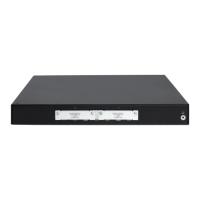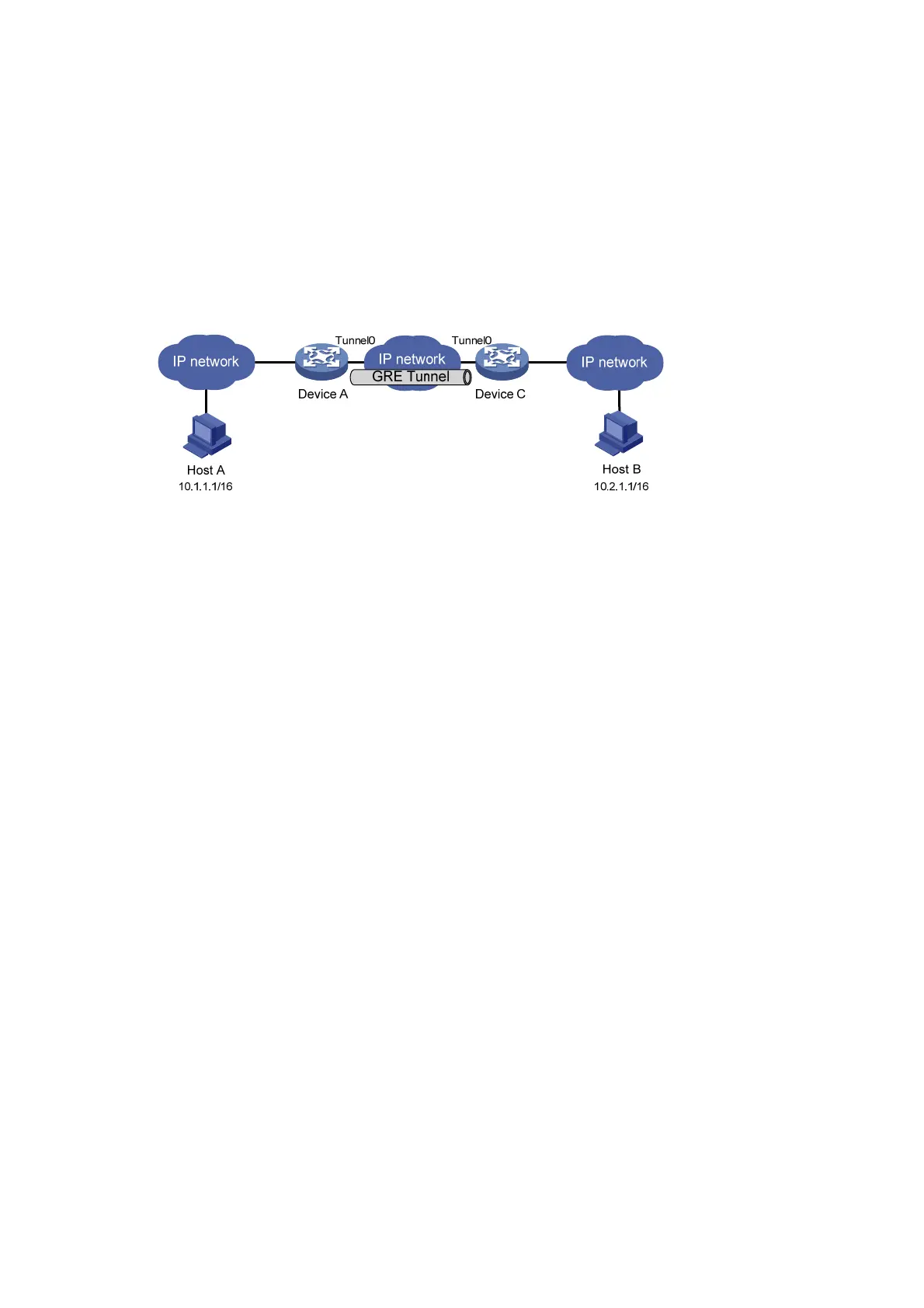356
5 packet(s) transmitted, 5 packet(s) received, 0.0% packet loss
round-trip min/avg/max/std-dev = 0.000/1.000/2.000/0.632 ms
The output shows that Router B can successfully ping Router A.
Troubleshooting GRE
The key to configuring GRE is to keep the configuration consistent. Most faults can be located by
using the debugging gre or debugging tunnel command. This section analyzes one type of fault
for illustration, with the scenario shown in Figure 141.
Figure 141
Network diagram
Symptom
The interfaces at both ends of the tunnel are configured correctly and can ping each other, but Host
A and Host B cannot ping each other.
Analysis
It might be because that Device A or Device C has no route to reach the peer network.
Solution
1. Execute the display ip routing-table command on Device A and Device C to view whether
Device A has a route over tunnel 0 to 10.2.0.0/16 and whether Device C has a route over tunnel
0 to 10.1.0.0/16.
2. If such a route does not exist, execute the ip route-static command in system view to add the
route. Take Device A as an example:
[DeviceA] ip route-static 10.2.0.0 255.255.0.0 tunnel 0

